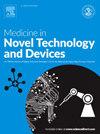Exploring brain efficiency during exercise: A fNIRS graph theory analysis
Q3 Medicine
引用次数: 0
Abstract
This study seeks to elucidate the reduction in brain functional network connectivity during exercise compared to rest, utilizing graph theory techniques to analyze data from resting and movement phases across various exercise modalities. This study employed a graph theory approach to examine differences in brain network functions across various motor phases. The participants engaged in upper limb rehabilitation exercises, including passive, active, and resistance exercises, while functional near-infrared spectroscopy was used to monitor the motor-related cortex. Functional connectivity was reduced during exercise compared with rest, particularly during active and resistance exercises. Small-world network properties did not vary significantly between the two phases, although these properties were higher during movement under conditions of high sparsity. Both global and local efficiencies remained largely unchanged between phases. However, local efficiency increased during the active and resistance exercises in the movement phase. Node efficiency analysis indicated that the motor and supplementary motor areas played critical roles during exercise, with the movement phase exhibiting shorter path lengths. While the overall brain functional connectivity decreased during exercise, there was an improvement in the efficiency of specific brain nodes, suggesting a network mechanism that supports movement execution. During exercise, there was a decrease in whole-brain functional connectivity, yet an enhancement in brain efficiency was observed. This enhancement in functionality of specific nodes may signify the network mechanism responsible for movement execution.
在运动中探索大脑效率:fNIRS图论分析
本研究旨在阐明与休息相比,运动期间大脑功能网络连接的减少,利用图论技术分析不同运动模式下休息和运动阶段的数据。本研究采用图论方法来研究不同运动阶段大脑网络功能的差异。参与者进行上肢康复训练,包括被动、主动和阻力训练,同时使用功能性近红外光谱监测运动相关皮层。与休息相比,运动期间功能连接减少,特别是在积极运动和阻力运动期间。小世界网络性质在两个阶段之间没有显著变化,尽管这些性质在高稀疏性条件下的运动中更高。在不同阶段之间,全球和当地的效率基本保持不变。然而,在运动阶段的积极和阻力练习中,局部效率增加。节点效率分析表明,运动过程中运动区域和辅助运动区域发挥关键作用,运动阶段的路径长度较短。尽管在运动过程中,大脑的整体功能连接性下降,但特定脑节点的效率却有所提高,这表明存在支持运动执行的网络机制。在运动过程中,全脑功能连通性下降,但大脑效率却有所提高。特定节点功能的增强可能意味着负责移动执行的网络机制。
本文章由计算机程序翻译,如有差异,请以英文原文为准。
求助全文
约1分钟内获得全文
求助全文
来源期刊

Medicine in Novel Technology and Devices
Medicine-Medicine (miscellaneous)
CiteScore
3.00
自引率
0.00%
发文量
74
审稿时长
64 days
 求助内容:
求助内容: 应助结果提醒方式:
应助结果提醒方式:


